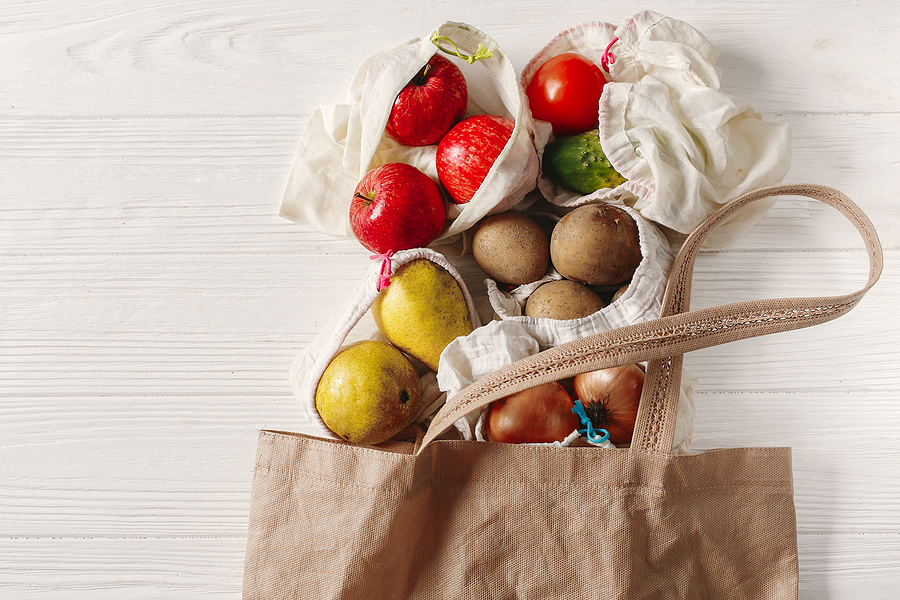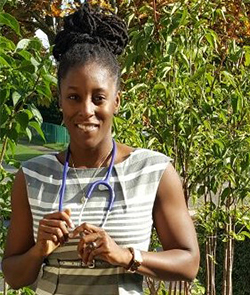
A Sustainable Food System?
A Sustainable Food System: It’s Everyone’s Job and It’s Easier than You Think

Across the globe, health and environmentally-conscious individuals and groups are advocating for a sustainable food system; this includes farming practices, seed to harvest to distribution practices, and waste management. Every action we take – and every inaction – affects the food we eat; our choices impact taste, appearance, variety available, and nutrient quality and has an impact on our health and the sustainability of the planet. Each of us can make a difference, as there are many “pro-sustainability choices” and most are easier than you might think.
Why Sustainable Choices Matter: Planetary Health and Human Health
The relationship between the environment and human health is complex and intricately linked to nine key “planetary boundaries” that scientists use to measure changes in the planet’s air, land, and water systems. When these boundaries are breached, there are rapid, irreversible environmental threats that impact our health and food supply and the very conditions under which humanity can thrive on Earth.
To date, four of the nine planetary boundaries have been crossed: climate change, biosphere integrity, land-system change, and the global nitrogen cycle. The evidence for these breaches is seen in a number of scientific observations:
- loss of biodiversity
- soil, air and water pollution
- polar ice-cap melting
- rising sea levels and ocean acidification
- species endangerment and alterations in habitats
- inadequate development of water and land resources to meet food and energy needs
These changes have unalterable effects on planetary and human health, including increased:
- disease carried by wildlife (e.g., Lyme, West Nile, Ebola)
- novel viruses transmitted by wildlife
- food and waterborne disease (e.g., bacterial illness)
- malnutrition in both industrialized and non-industrialized countries
- cancer, heart disease, respiratory illness, diabetes, and other chronic diseases
Farms & Feed, Gardens & Groceries
A major contributor to environmental rifts and the degradation of health is our reliance on factory farms (Concentrated Animal Feeding Operations or CAFOs). In the U.S., most meat, poultry, egg and dairy come from CAFOs. Whether in the U.S. or around the globe, acquiring the land needed for such farming often means deforestation, a practice associated with habitat destruction, changes in ecosystems and biodiversity, and climate change.
Mounting evidence from the past two decades shows deforestation is also associated with rising rates of infectious disease in animals and humans. When wildlife lose their natural habitat to deforestation, they are forced to migrate into a new ecosystem where they are biologically ill-equipped to fend off bacteria or viruses that exist in the new ecosystem. When animals and humans intermingle within ecosystems that have been typically foreign to one another, this sets up a pathway for pathogen transmission from wildlife to humans.
CAFO farmed livestock are fed hormones and antibiotics to prevent disease and promote faster growth. It has been well established that antibiotics in animal feed is a primary factor in human antibiotic resistance, a serious public health problem. Farms that promote “grass-fed” beef are more humane for animals and the meat produced is better for humans, but we must keep in mind that aspects of all farming practices can damage delicate ecosystems. We have to feed billions of people, many of whom consume too much of any kind of meat. As part of the solution, we can each commit to consuming less meat and more vegetables and make good, sustainable choices.
Simple Sustainable Choices You can Make
Grow Your Food. Growing food saves money and reduces the environmental cost of factory farming. Start a garden or even an organic container garden. Remember: if you use commercial, chemically-laden soil, fertilizer or feed, you are not only damaging your personal ecosystem, you are also diminishing the quality of nutrients and vitality of the food you are growing. Use organic soil, native plants, natural fertilizer and pest control, and compost. Practice conservation-friendly watering to help your garden grow.
Be a Conscious Consumer. When you can’t grow your own foods, buy organic, in-season foods from a local farm market or CSA (Community Supported Agriculture or crop-share) in your area.
Veg-out More Often. Even just one day a week, replace meat-based recipes with savory vegetarian options.
Expiration Date Knowledge. “Sell-by” and “use-by” dates are manufacturer suggestions for peak quality. The dates are not federally regulated to indicate safety, except on certain baby foods. Not sure if you should keep a food or toss it? Refer to a shelf life guide.
Net-Zero Your Fridge. Before you grocery shop to restock, try to make use of all perishable food: Leftover meat and vegetables can be turned into a casserole, stew or broth. Fruit can be frozen. Learn what food can be canned or preserved for later use. Your biggest impact will come from what you do with your groceries (or garden harvest) so that as little food as possible goes to waste, ending-up in an environmentally destructive landfill.
Be Freezer Friendly. Freeze leftovers (ideally in reusable containers) if you won’t have the chance to eat them before they go bad. Refer to this chart for freezer-life of common foods.
These choices aren’t complicated; they only require that you pay attention to what you choose to buy or grow and how you go about doing it. Start with one or two of these approaches and try others over time. Your health and your planet will thank you.










Write a Comment